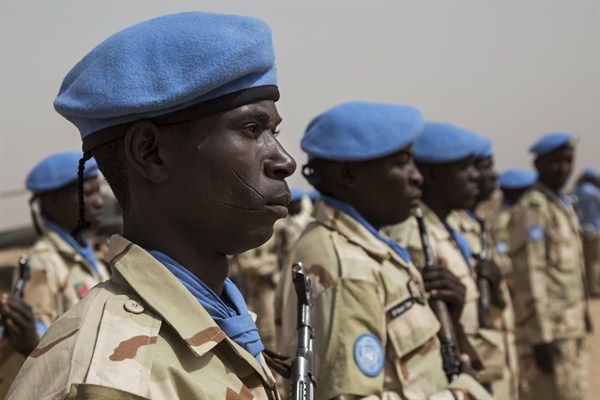People who write about international politics inevitably make a lot of incorrect predictions. It is sometimes useful to look back and ask why our prognostications were wrong. At the start of this year, I asked, “Where will international stabilization forces intervene in 2015?” My best guesses were Ukraine, Nigeria, Libya and Syria.
There has been much talk about deploying peacekeepers to these war zones over the ensuing 12 months, but markedly less action. In retrospect, it seems clear that governments and international organizations have taken a cautious approach to mounting new missions in high-risk environments in 2015. But there are equally clear signs that they will not be able to resist these dodgy deployments indefinitely.
In Ukraine, the Organization for Security and Cooperation in Europe (OSCE) has kept its existing civilian monitoring mission, launched in 2014, in place. Although it faces regular obstruction by secessionists in the east of the country, it has incrementally improved its oversight of the front lines. OSCE officials have occasionally proposed adding a military component to the mission, and the Ukrainian government has said that it would be open to a full-scale United Nations peacekeeping mission. But it seems unlikely that Russia will accept any deployment that could restrict its freedom of action in eastern Ukraine in the foreseeable future.

